Adenium (Desert Rose)– A beautiful strange looking plant is now a hot topic of interest among plant lovers all over the world. The community is astonished by the charming beauty and shape as well as vibrant colors. Such a beautifully weird looking plant with hot and strong colorful flowers is a native of the Arabian Peninsula and sub-Saharan Africa.
Adenium Desert Rose (a) 25 Year Old Adenium (June 2020) (b) 16 Year Old Adenium (June 2020) (c) 5 Year Old Adenium
(Image Source: https://harvyora.com)
The plant that lives forever
These plants are well known for their long life span. If you maintain the plant in good health, it can literally live forever. In the tropical climate of India Desert rose can thrive for well more than 30 Years.
A Natural Bonsai
This desert beauty is often called a natural bonsai as the original shape of the plant itself resembles a proper Bonsai. Since it is easy to maintain and convert to a bonsai shape, it is now taking momentum in the hearts of bonsai lovers all over the world. The large cone shape of the caudex, the style with which roots are developing, the height and the shape of branches will resemble a fully grown tree but in miniature size.
You can also train the plant to develop other bonsai features using normal bonsai art techniques. With Adenium (Desert Rose), the development will be fast as compared to other bonsai plants. Apart from this, the Adenium (Desert Rose) bonsai plants will give you the enjoyment of vibrant colours with its colorful flowers.
The plant of fertility and abundance
Desert Rose is believed to bring wealth to the owner as highlighted in its Chinese name 富贵花 (fuguihua or wealth plant). The swollen basal stem and roots represent fertility and abundance. It is believed that the larger the swollen base, the greater the wealth and abundance.
Adenium has several cultivars with different colored flowers. Among the cultivars, those with red and pink flowers are favored because brightly colored flowers represent luck and prosperity.
Adenium (Desert Rose) obesum is important in traditional medicine. In the Sahel a decoction from the roots, alone or in combination with other plants, is used to treat venereal diseases; a root or bark extract is used as a bath or lotion to treat skin diseases and to kill lice, while latex is applied to decaying teeth and septic wounds.
Adapted to extreme heat and lack of water.
Adenium (Desert Rose) by birth is a desert plant. So it is automatically adapted to hot and humid conditions. It is a vigorous and healthy plant under the right conditions and with less care. The Desert Rose Bonsai adapts easily to growing in a pot, which makes it well suited for a bonsai, although it doesn’t grow a very ramified branch structure.
During wintertime the plant will drop its leaves except in special tropical climates. and overwatering or keeping under direct rain will stunt the growth and may lead to rot. A rot stem for Adenium (Desert Rose) if not taken care, can be fatal.
Varieties and Flowers
Adenium (Desert Rose) based on its origin and abundance are classified as these species.
1. Adenium (Desert Rose) Obesum
Adenium Obesum is the most popular variety in the family. It is a native of African Sub-Saharan region and grows abundantly in tropical climate regions. Obesum usually grows straight upwards with a greenish grey trunk with fat caudex and gets slimmer on the top and branches.
The plant can be identified with the droplet shape of the leaves and its spiral arrangement. The leaves will be larger in the bottom and the top leaves never cover the lower ones. If kept in hot and humid conditions, obesum blooms in the summer and the flowers will be dark red on the outside and white or light yellow inside. As the flower ages, the dark red will diminish and become light pink.
2. Adenium (Desert Rose) Arabicum
Arabicum is the native or local species found in Saudi Arabia and Yemen. It is known as the most succulent and desert variety. The arabicum varieties can be identified by its characteristic strong fat caudex and squat form and leaves that grow short and concentrated near the top.
The flowers are usually single petals and pink. Unlike obesum the leaves are shiny at the top and bottom surfaces. The flowering season for arabicum is usually from spring to end of summer.
3. Adenium (Desert Rose) Boehmianum
Boehmianum is found growing in abundance in Southern Africa and it is identified for the first time in Namibia. It is characterized by its small size and silvery branching caudex with Pale grayish Green leaves at the end.
The Boehmianum is less popular among Desert Rose lovers due to its relatively poor flowering characteristics and long dormancy period during winter. It shreds almost all the leaves and becomes dormant during the winter.
4. Adenium (Desert Rose) Multiflorum
Multiflorum varieties are commonly called Impala Lily. It is a short variety of Adenium (Desert Rose) species. Multiflorum generally reaches a maximum height of three meters. The plant is characterized by its large underground root and thick smooth branches.
The Multiflorum varieties can also be identified by its leathery, leaves with smooth and shiny green upper side and light bottom side. These species are sensitive to minimum temperatures. A minimum temperature of 10 degree celsius is required for optimal growth. Multiflorum varieties usually bloom near winter with strong red near the edges and fading pink to the center.
5. Adenium (Desert Rose) Oleifolium
This small and very slow growing species is a native of South Africa and Namibia. The Oleifolim is characterized by its sunken caudex below soil extending under a foot in length. They are recognizable by long, very narrow leaves with greenish grey color and a powdery dust can be found on the surface.
Flowering season will start in late spring with relatively small flowers and colors ranging from pink to red. They usually have a range of colors but unfortunately these varieties of adenium are very rare and hard to find.
6. Dorset Horn Adenium (DHA, Dwarf with Curly Leaves
The DHA variety is actually a mutated form of adenium found in nature. They are characterized by the curly shape of the leaves and Dwarf form. DHA adeniums are very rare to find and difficult to reproduce. Yet the plant is in high demand from the plant lovers due to its distinctive shape and size.
Adeniums are easy to maintain plants as long as you know how it will behave in each season of the year. They will act as two different plants with different requirements during different seasons of the year. During summer, with the warm and humid conditions, they are in full growth period and should be treated as a tropical plant. In a full grown period they need water and fertilisers in abundance. Although during winter, they should be treated as a dormant plant with the least requirement of water and fertilisers.
During dormancy adenium should be potted in a well drained pot with little or no watering. The watering, if needed, can be restricted only to warm bright days during winter or rain. Over watering and poor drainage during dormancy will lead to root rot and that can kill the plant eventually. The potting mixture for adenium should be chosen so that maximum drainage is available.
You can start with any light mix available in the market compounded with 30 to 50% drainage material like sand, clean poultry grip, gravel or perlite. The potting mixture needed to be changed every one or two years to restore nutrient balance and soil properties. Choose any kind of pot with good drainage to plant and choose a pot size only a bit larger than the root size. A very large pot with a lot of soil around will cause water retention and thus root rot. We prefer a relatively shallow, bowl-like pot slightly larger than the root system which allows rapid drying and also provides room for root expansion.
4 thoughts on “Adenium or Desert Rose – Gem of your Garden!”
Leave a Reply Cancel reply
You must be logged in to post a comment.





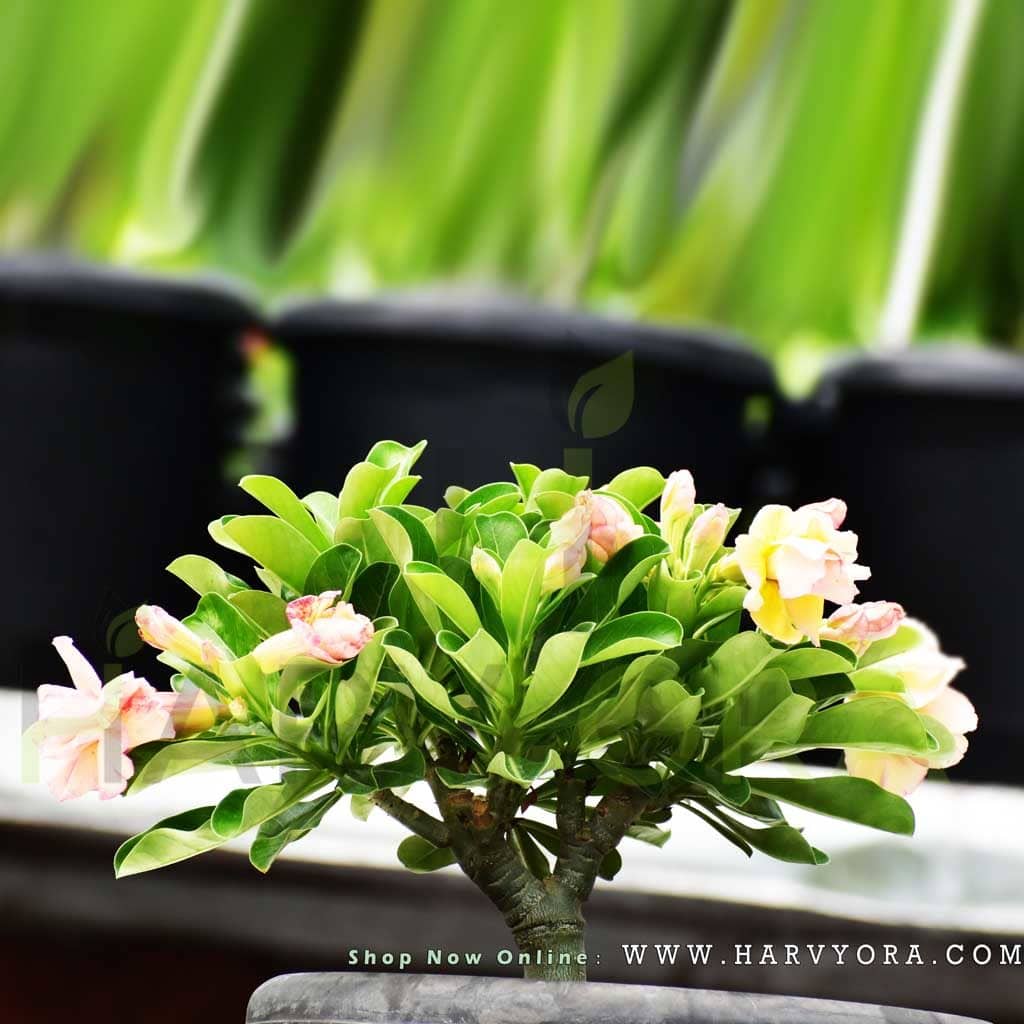

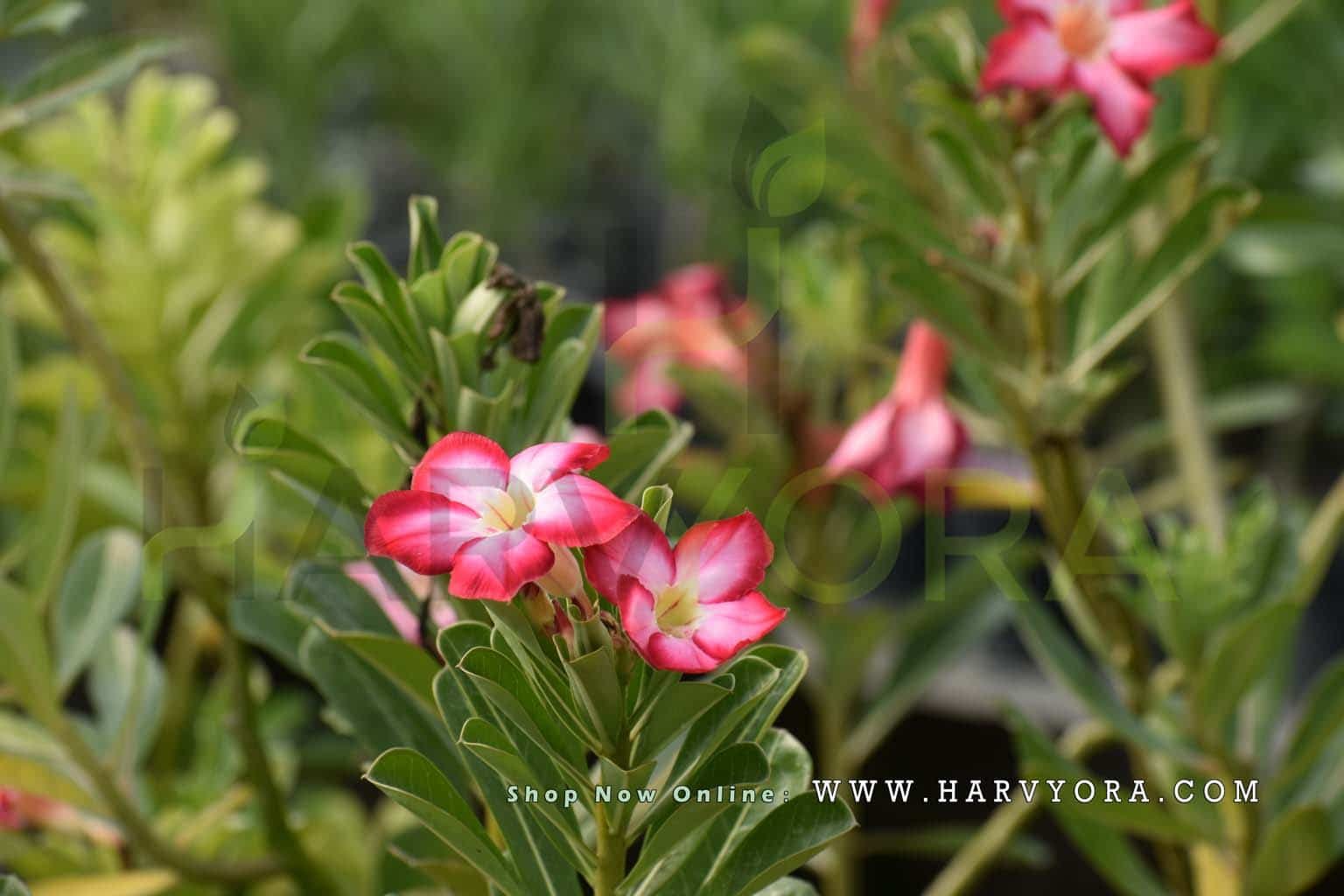

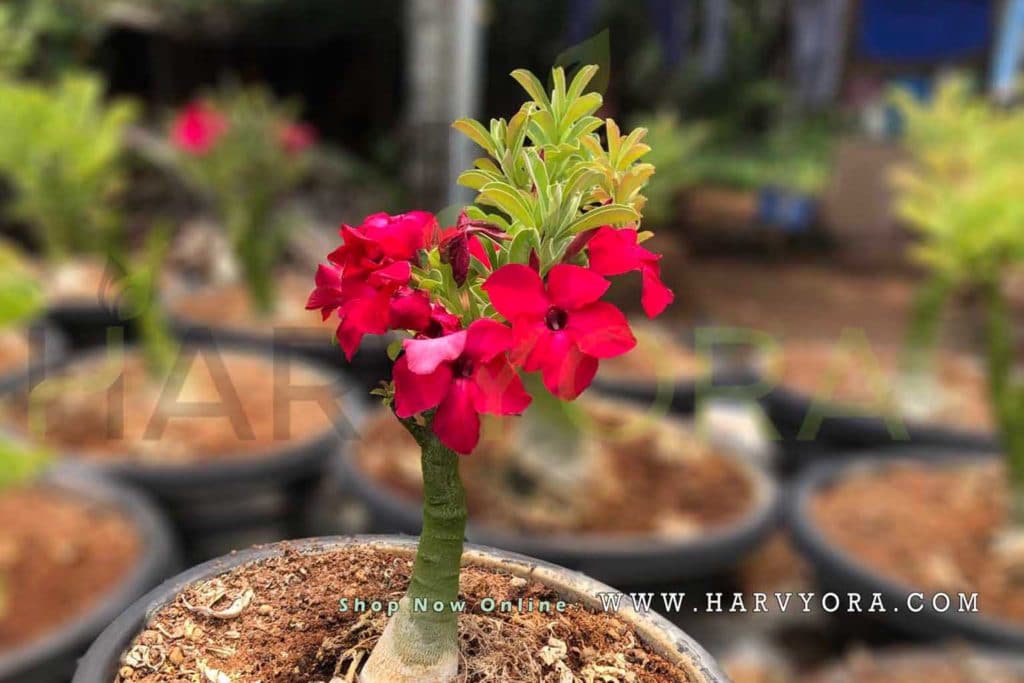











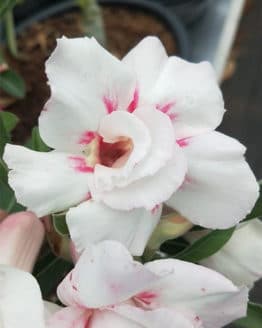
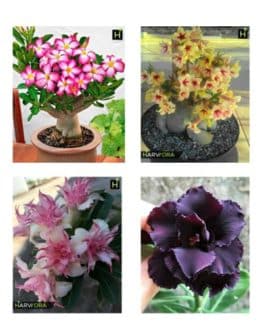



I have a garden in my roof, so there is plenty of sunlight throughout the day. My question is can I keep them outdoor in the rainy season?
Received a very healthy addendum plant with pot
Thanks
Received a very nice and healthy adenium plant with pot .let us see how it blooms
I have received 3 Adenium plants. This is my first Adenium purchase. Want to know how to maintain it ? Thanks.